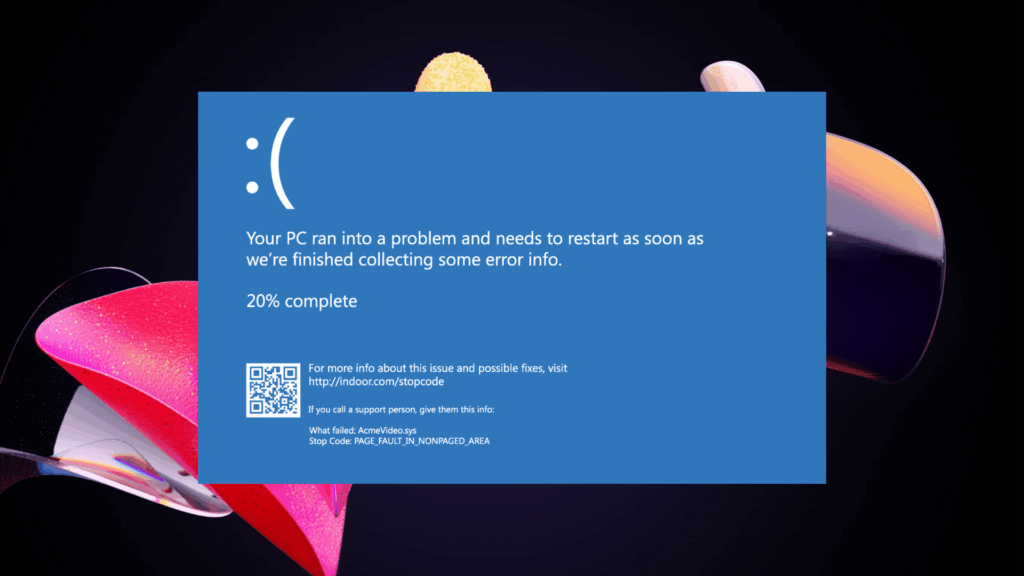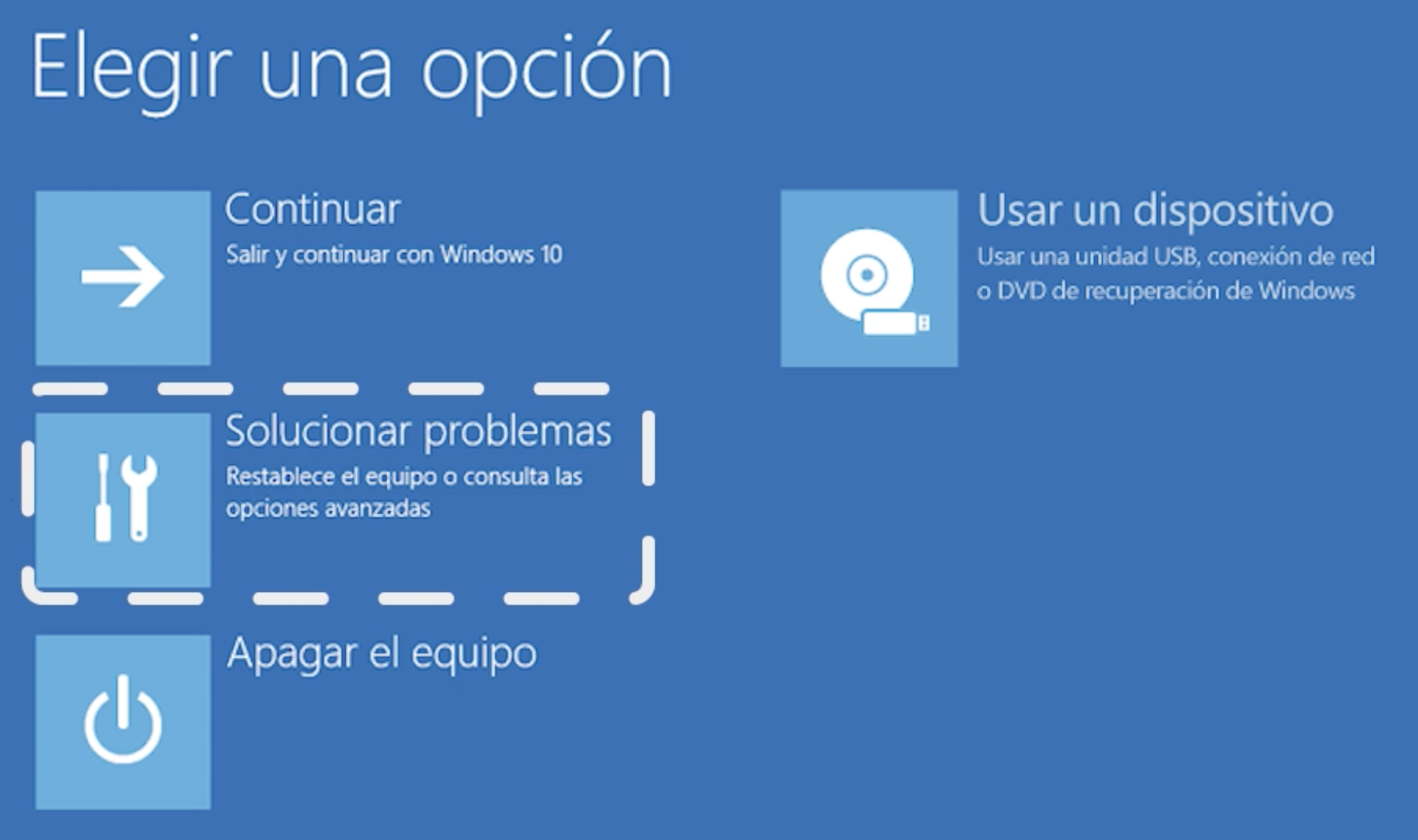- Bugcheck 0x50 indicates invalid access to the nonpaged area; parameters and subtype reveal the operation (read/write/execute) and the exact reason.
- Common causes include faulty drivers/services, antivirus software, corrupted NTFS, and RAM failures; Event Viewer helps you correlate these.
- Safe Mode, SFC/DISM, CHKDSK, and updating/reinstalling drivers usually solve the problem; Driver Verifier and WinDbg can help isolate the offending module.

When Windows crashes with a blue screen and the code appears PAGE_FAULT_IN_NONPAGED_AREA (0x00000050), it's not just any scare: it means that the system has tried to use memory that it shouldn't, either because the address is invalid or points to freed memory. This bugcheck 0x50 It's not new and has been around since older versions of Windows, but luckily we have a very clear map of causes and solutions.
Although the error may seem random, it almost never is: it usually occurs after changing hardware (RAM, graphics), installing or updating drivers, applying a Windows update, or touching system services. The good news With a couple of well-organized diagnoses, you can determine whether the source is software or hardware and act without wasting time.
What exactly does PAGE_FAULT_IN_NONPAGED_AREA mean?
The “nonpaged area” is a fragment of memory that the system must always have available in RAM, without the possibility of sending it to the paging file; if the kernel tries to access something there and fails, the screen pops up with code 0x50. Simply put: Windows has referenced invalid system memory, or has used an address that was already freed.
This symptom may come from a misspelled or corrupt driver, a faulty system service, antivirus software going awry, or NTFS corruption; or hardware issues, with RAM being the prime suspect (faulty modules, L2 cache, even video RAM in some cases). The key is in differentiating logical cause (software) from physical cause (hardware).
Bugcheck 0x50 parameters and how to interpret them
In addition to the stop code, Windows provides four arguments that tell you a lot about the failure; interpret them well saves you hours.
| Parameter 1 | Virtual address of the referenced memory (the one that caused the failure); if it's garbage or is out of range, you already have a clue. |
| Parameter 2 | Indicates the operation performed and varies depending on architecture and version. After Windows 1507 (TH1):
Before Windows 1507 (TH1) (x64/x86): 0 = read, 1 = write; did not exist the differentiated code for execution. |
| Parameter 3 | Address of the instruction that referenced the invalid memory (if available); It is used to disassemble and see what the code did at that point. |
| Parameter 4 | Page fault type; here Windows classifies the exact reason. Typical values:
|
If the system can point to a driver, its name is printed in the BSOD itself and is left in KiBugCheckDriver (PUNICODE_STRING). With WinDbg you can see it with dx: dx KiBugCheckDriver and thus confirm the suspicion of the failure.
Common causes and how to detect them quickly
In practice, 0x50 is due to faulty drivers or system services that use memory that they shouldn't, to antivirus intervening in critical areas or to an NTFS volume with errors; on the physical side, the RAM is usually behind (damaged modules, dirty contacts, weak sockets), as well as possible L2 cache or VRAM failures.
Check the Event Viewer (System Log) and filter by critical errors at the time the BSOD occurred: you'll see services crashing, drivers failing to load, or disk I/O traces. Correlate time from the screenshot with system events tells you where to start.
If the error appears after installing new hardware or cleaning your computer, first look at the obvious: RAM modules properly seated, graphics card in its slot, cables secure, and nothing has moved with the compressed air. A slight shift is enough to unleash chaos; do not underestimate the mechanical factor.
A typical case: after playing a game, your PC reboots, and as soon as you log into Windows, you get a BSOD with this code. You update or clean graphics drivers with DDU, but the crash continues, and even after restoring a "good" backup from a few days ago, it persists. If returning to a healthy software state the problem persists, the probability that it is hardware increases, although it is advisable to exhaust system tests before changing parts.

Enter Safe Mode and the Recovery Environment
To work without loading the culprit driver, it is essential to boot into Safe mode with networkingThis mode uses generic drivers and allows you to operate without the BSOD occurring as soon as you boot to the desktop.
If Windows won't let you in, force the Recovery Environment (WinRE): Start your PC and when the spinning dots appear, hold the power button for 5–10 seconds until it shuts down; repeat this twice, and on the third startup, you'll see the advanced options. From there You can access Startup Repair, System Restore, Safe Mode, or Command Prompt, or Analyze the boot with BootTrace.
On computers that still allow the function key, try F4 / F5 / F8 right after powering on to load Advanced Options. Go to Troubleshoot > Advanced Options > Startup Settings and press the 5 key to enable Safe Mode with Networking; This gives you a chance to apply BSOD-free fixes instantly.
Software solutions to try first
Before blaming RAM, it's a good idea to rule out system corruption and disk problems. Start by System File Checker (SFC) and DISM, then scan the volume with CHKDSK; if there are any suspicious drivers, update or reinstall them, and temporarily disable your antivirus while testing.
Repair system files (SFC and DISM)
Open PowerShell or Command Prompt as administrator and run: sfc / scannowWait for it to finish, and if it finds and repairs files, restart. If SFC doesn't fix everything, run DISM:
DISM.exe /Online /Cleanup-image /ScanHealth
DISM.exe /Online /Cleanup-image /RestoreHealthThese commands repair the Windows image and, combined with SFC, They leave the system intact to rule out corrupted OS files as the culprit.
Check and repair the disk (NTFS)
Open cmd as administrator and run chkdsk C: / f / r (substitute C: if your system is on another drive). Agree to schedule the scan and reboot; if there were reallocated sectors or errors in the file system, CHKDSK will mark them and repair them as much as possible.
Update or reinstall problematic drivers
From the Device Manager, locate the suspicious device (very often graphics, storage or network) and choose Update Driver; if the issue is due to a recent update, try Roll Back, or, as a clean measure, uninstall and reinstall from the manufacturer's website. On GPUs, using DDU in Safe Mode and then installing the latest WHQL is usually a miracle cure; if you have problems installing drivers, see the AMD Adrenalin Guide.
Antivirus and Quick Startup
Temporarily disable your antivirus (and never leave two running at the same time). Microsoft Defender This is sufficient for most users; if Defender alone clears the problem, you've isolated the culprit. Also, disable Fast Startup in Power Options to avoid hybrid states that sometimes they drag problems between sessions.
Paging file and virtual memory
It's not common, but a shredded page file can add to the chaos. Go to System Properties > Advanced > Performance > Settings > Advanced > Virtual Memory and uncheck the box. automatic management; you can try without paging file or set stable size on another drive. After changes, reboot and check if the BSOD stops.
Windows Update
Check for pending updates: Many BSODs are resolved with kernel or storage stack patches. Go to Settings > Update & security and tap Search for updates; install everything important and reboot. Cumulative fixes often include memory fixes.
Hardware Diagnostics: RAM, GPU, and more
If after cleaning the software it still crashes, it's time to open the case. Turn off, unplug, discharge static electricity and reset the RAM: Remove modules, clean contacts with isopropyl, carefully blow on the sockets and replace them until you hear a click. A bad contact It is more common than you think.
Test module by module and slot by slot; if it works with one stick and not with the other, you've found the culprit. if you have two, toggle to narrow down. On computers with dedicated graphics, also check that the GPU is securely anchored and has the correct PCIe power supply; a half-powered graphics card can cause memory exceptions in the kernel.
run the tool Windows memory diagnostics: Search for it in the Start menu, choose “Restart now and check for problems,” and let it go through all the steps. Then, check the “MemoryDiagnostics-Results” entry in Event Viewer. If you report errors, the RAM is not good and needs to be replaced.
If you have recently changed hardware (CPU cooler, SSD, RAM or graphics) and the screenshots have been appearing since then, carefully disassemble and reassemble. Sometimes when placing a heatsink, the board flexes or a memory module moves a few millimeters… and that’s enough to cause the system to crash.
Driver Verifier: hunting wayward drivers
El Driver Verifier Stresses drivers in real time to force their errors and quickly expose them. Run "verifier," choose to create standard configurations, and only flag suspicious third-party drivers; don't activate everything at the same time because it adds overhead and can make the system unstable.
If the computer starts with Verifier and you get a different BSOD that already points to a specific .sys, bingo: ask an updated version to the supplier or remove the driver. Keep Verifier only as long as necessary, disable it when you close the case.
When to think of it as hardware (and not software)
Clear signs of hardware: you restore a “clean” system image from a few days ago and the error persists, you change drivers and the BSOD persists, or Windows crashes even on light tasks (browsing, desktop). At that point, focus on RAM, motherboard, and storage; test modules one by one, change slots, run MemTest or Windows diagnostics, and if you can, test on another computer.
With graphics cards like a recent AMD Radeon, uninstalling with DDU in Safe Mode and installing the latest WHQL usually solves the problem if it was software. If after that it continues and temperatures are normal, the next step is to validate hardware and, as a last resort, perform a clean reinstall of software.
If you've made it this far, you've already mastered the map of the PAGE_FAULT_IN_NONPAGED_AREA: you know what its parameters mean, what causes it most frequently, how to narrow it down with Safe Mode and WinRE, what repairs to apply to the system and when to raise your hand and point to the RAM or a physical component; with WinDbg and Driver Verifier in the chamber, you will have solid evidence to decide whether to update a driver, repair the file system or change that module that is causing problems.
Editor specialized in technology and internet issues with more than ten years of experience in different digital media. I have worked as an editor and content creator for e-commerce, communication, online marketing and advertising companies. I have also written on economics, finance and other sectors websites. My work is also my passion. Now, through my articles in Tecnobits, I try to explore all the news and new opportunities that the world of technology offers us every day to improve our lives.


